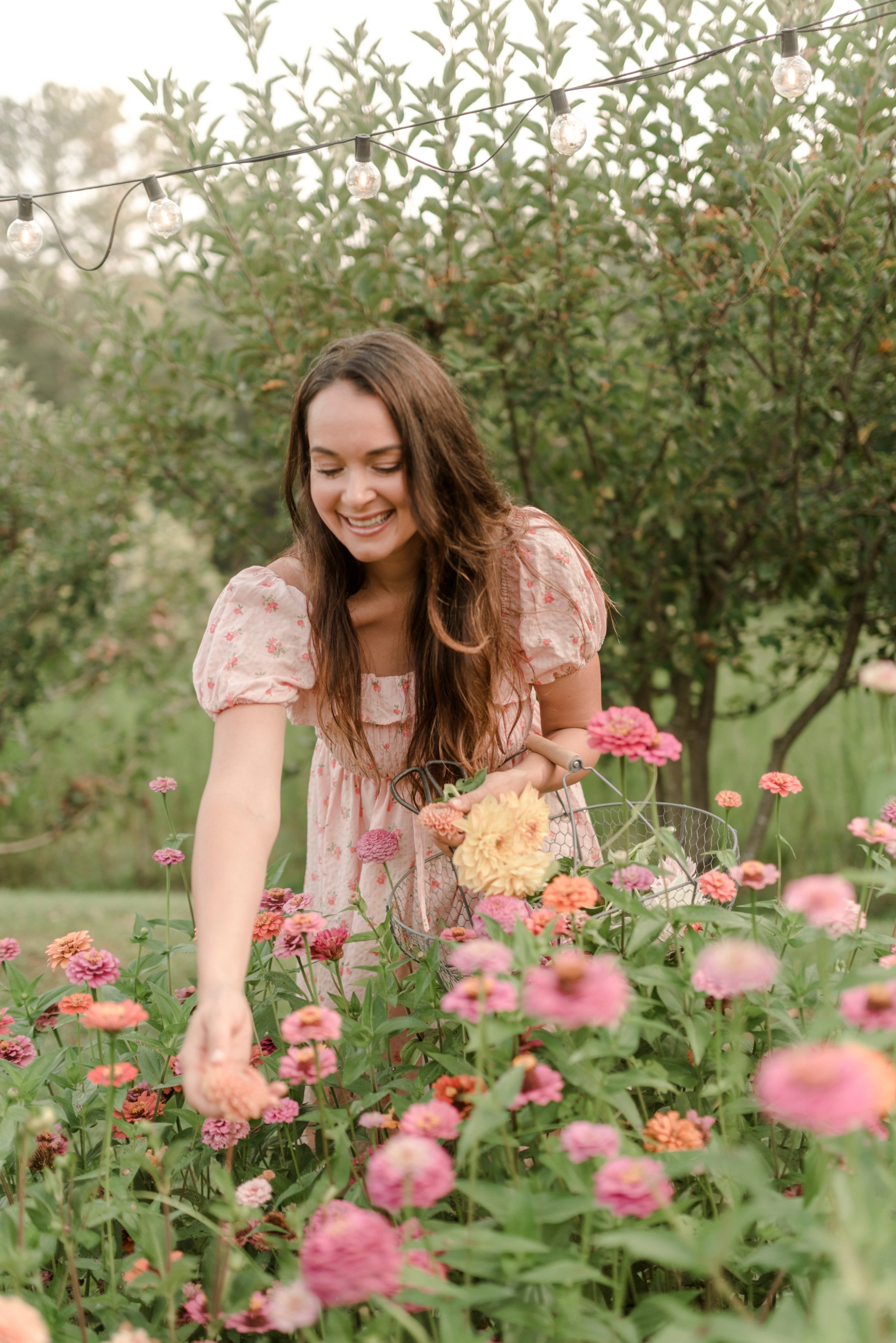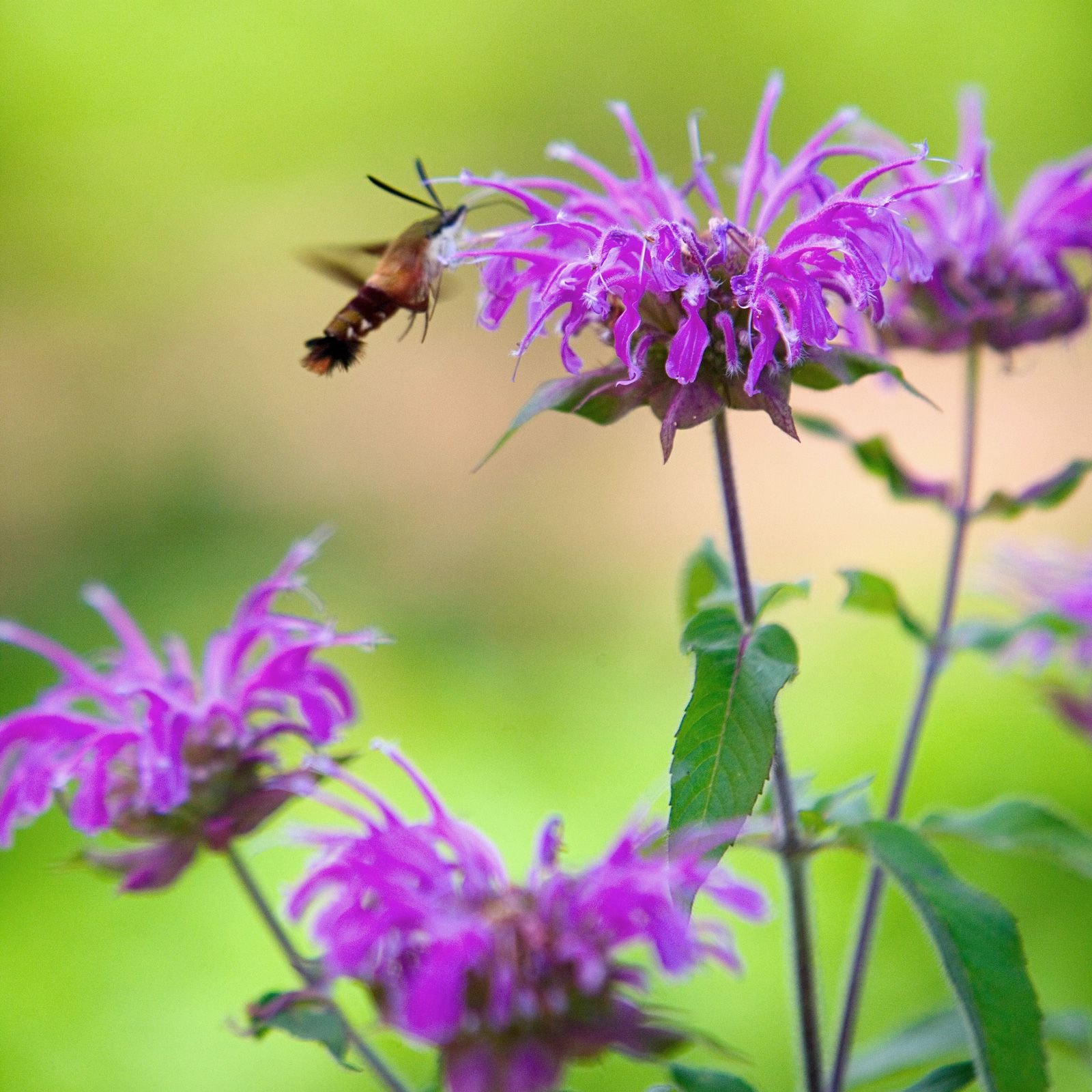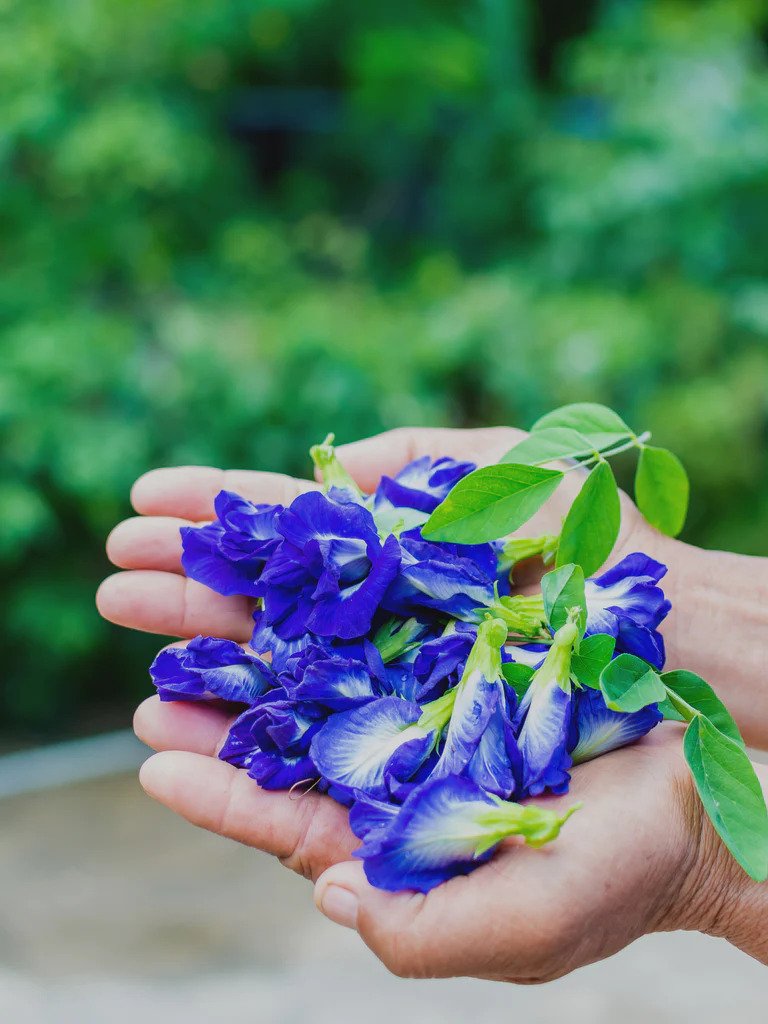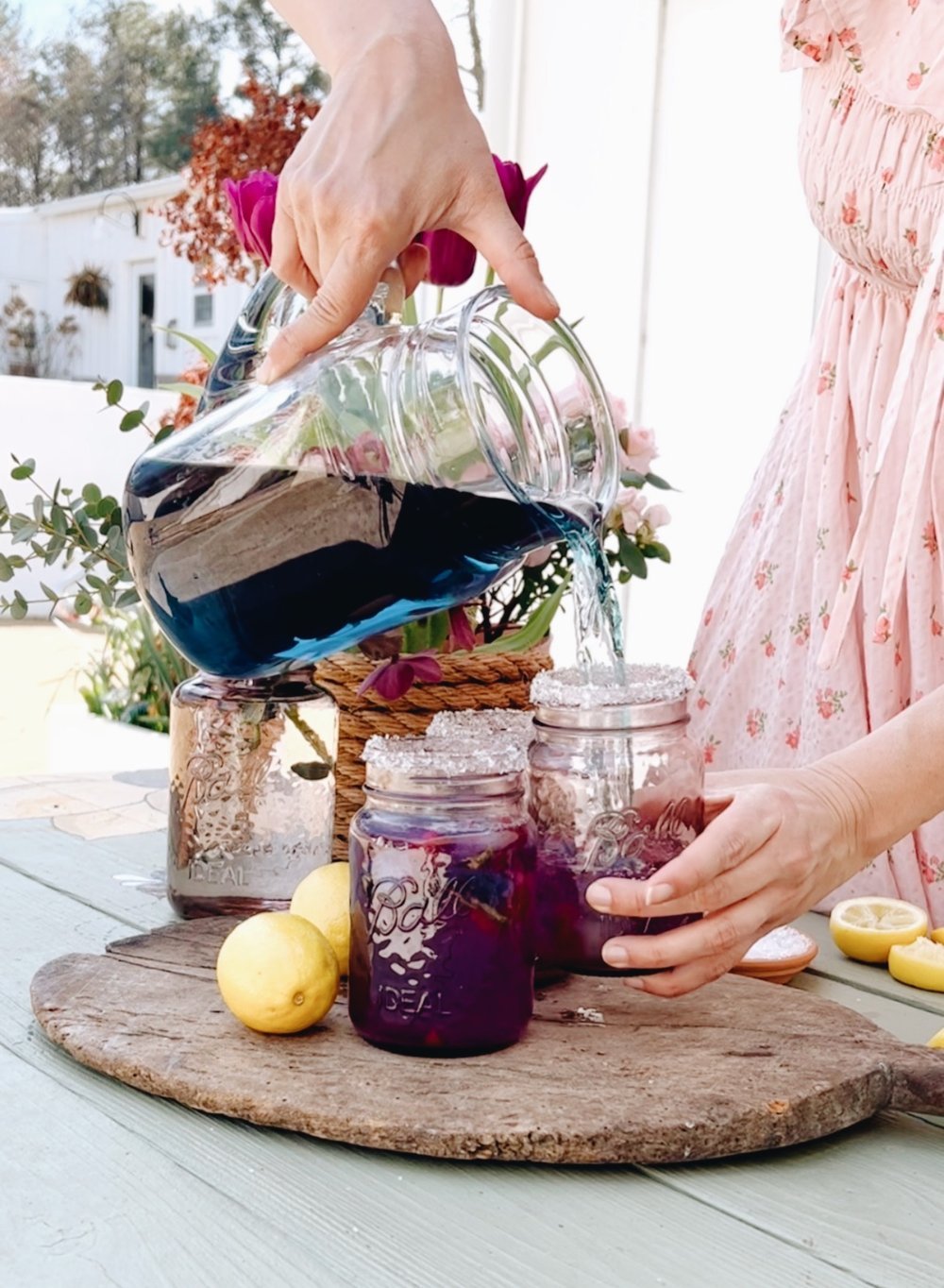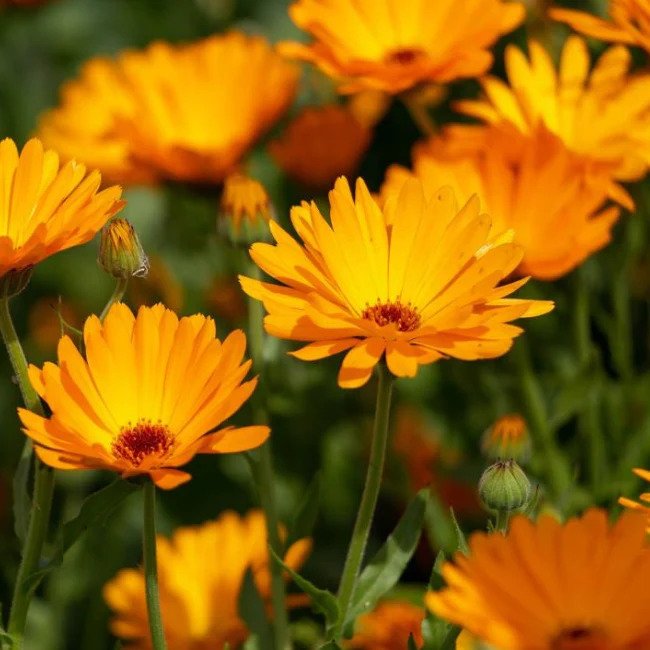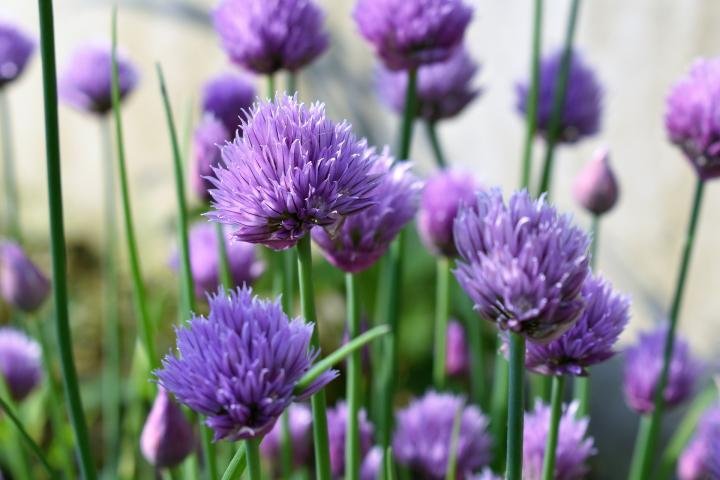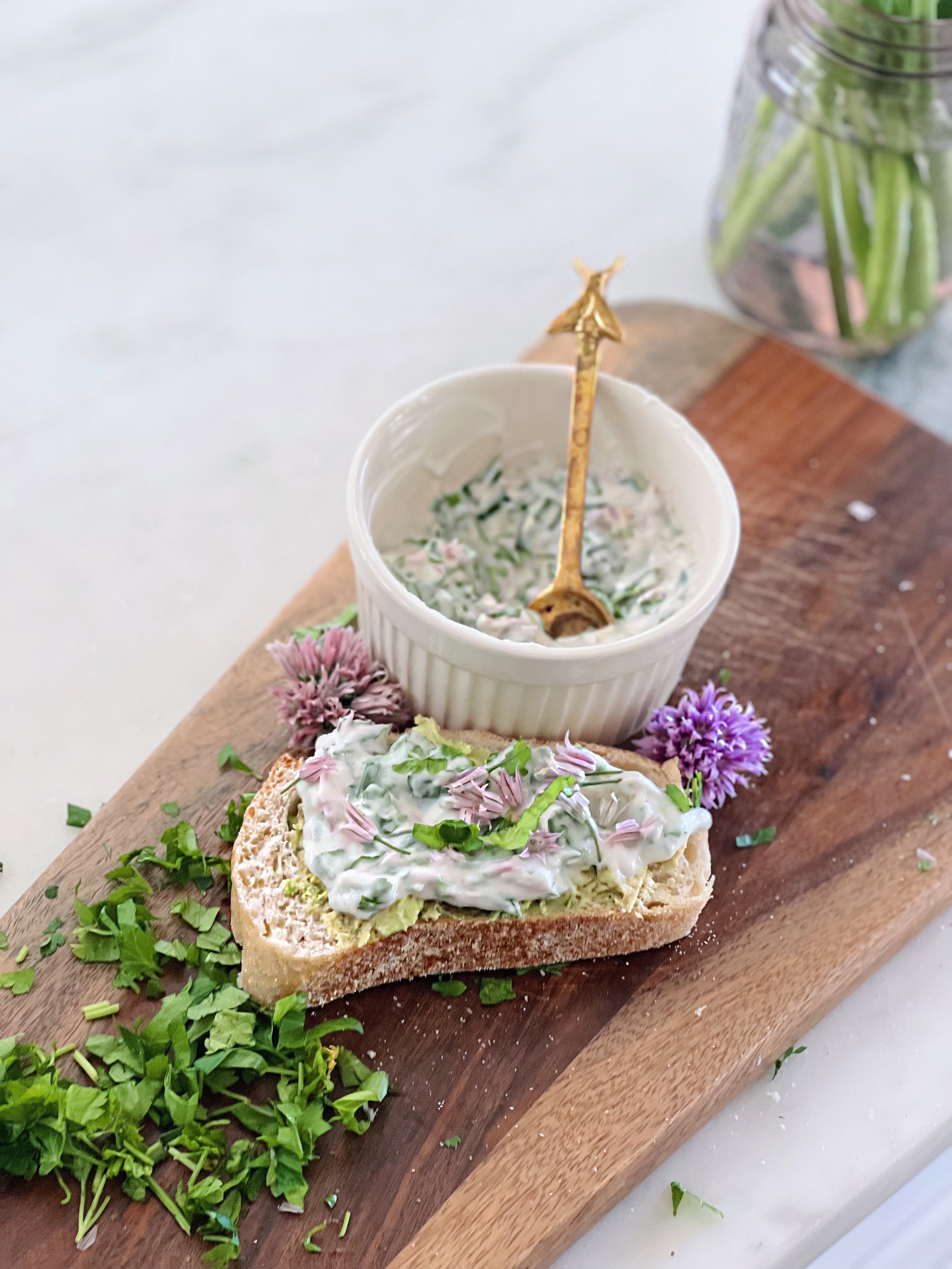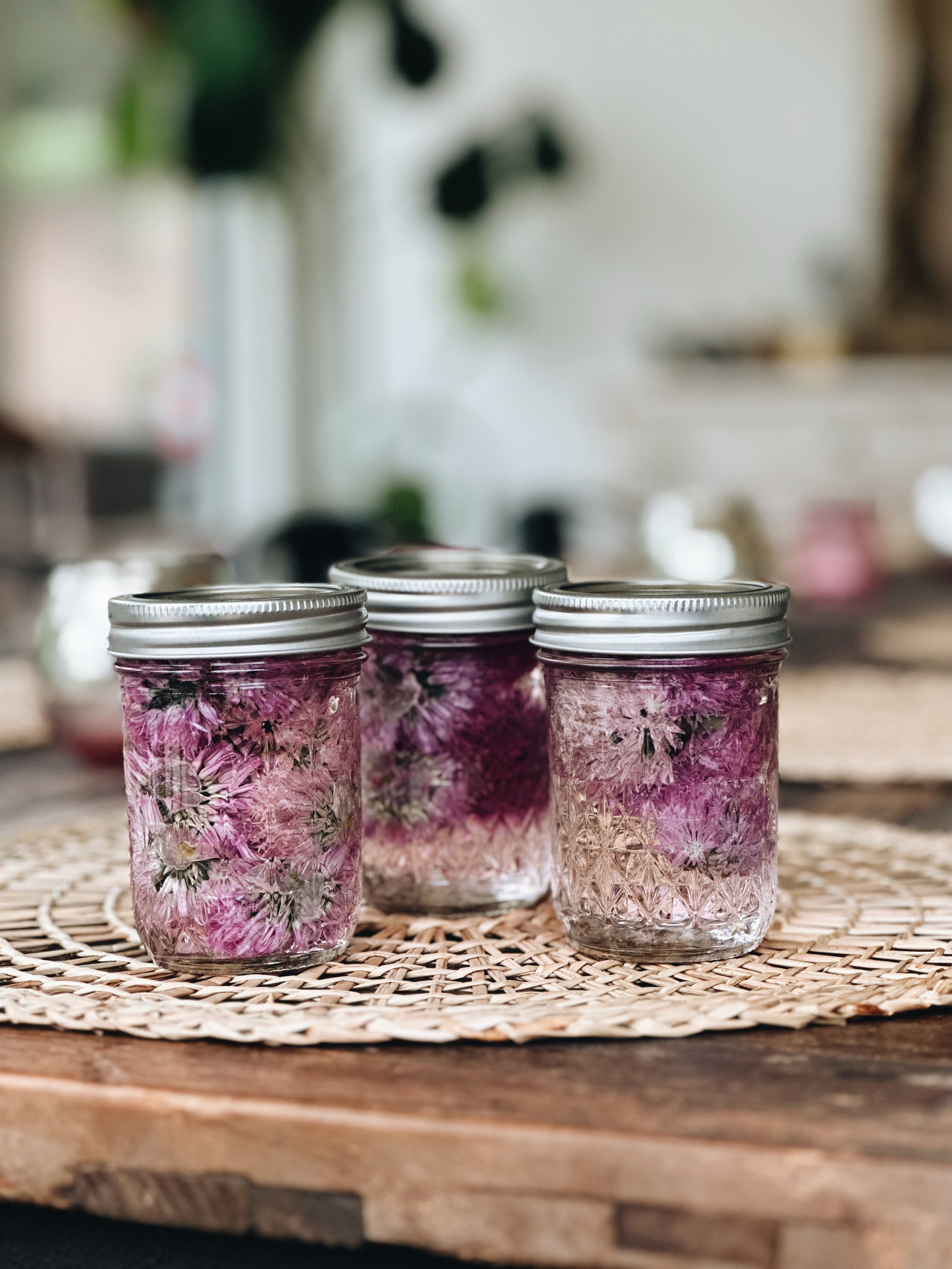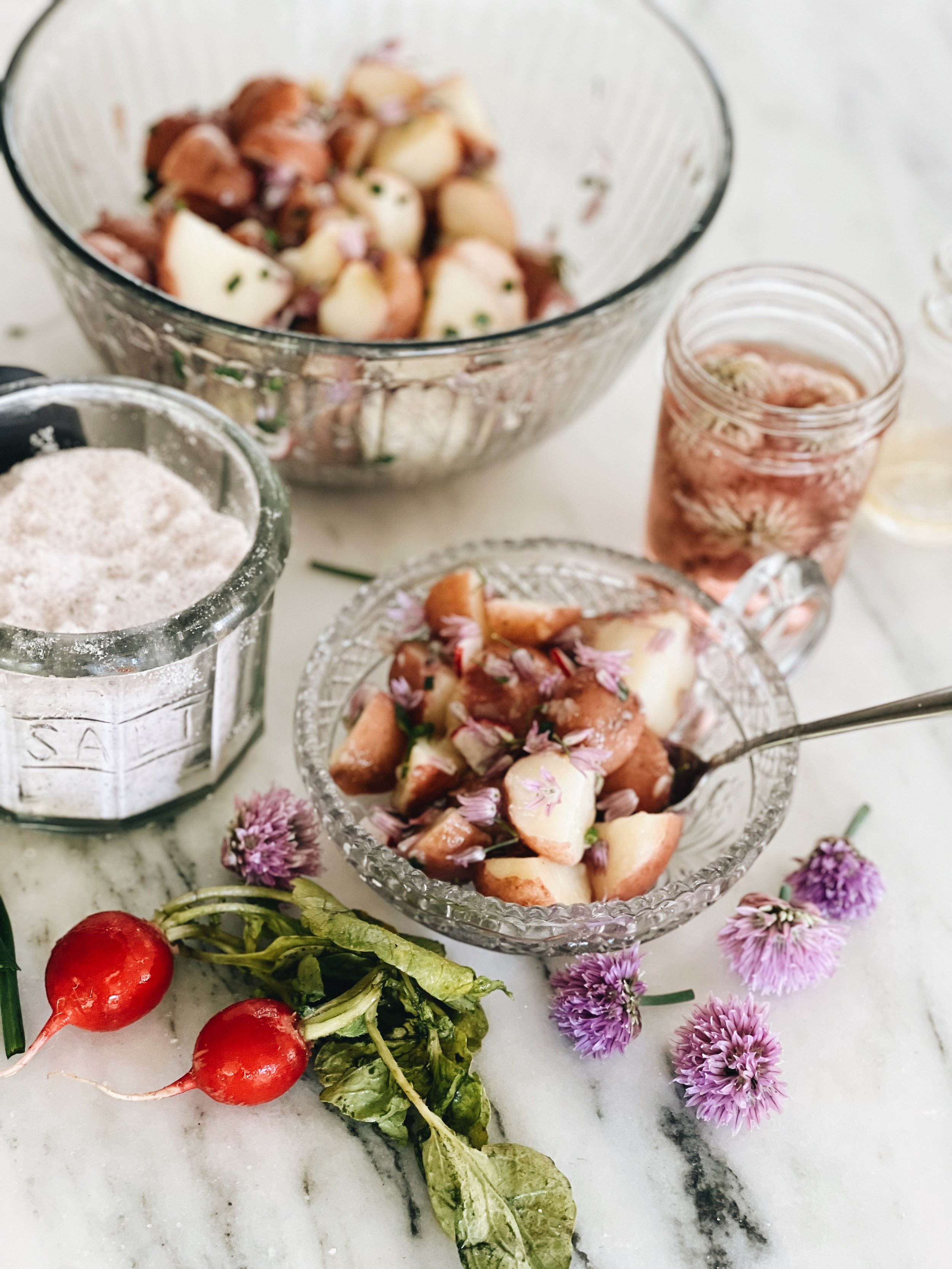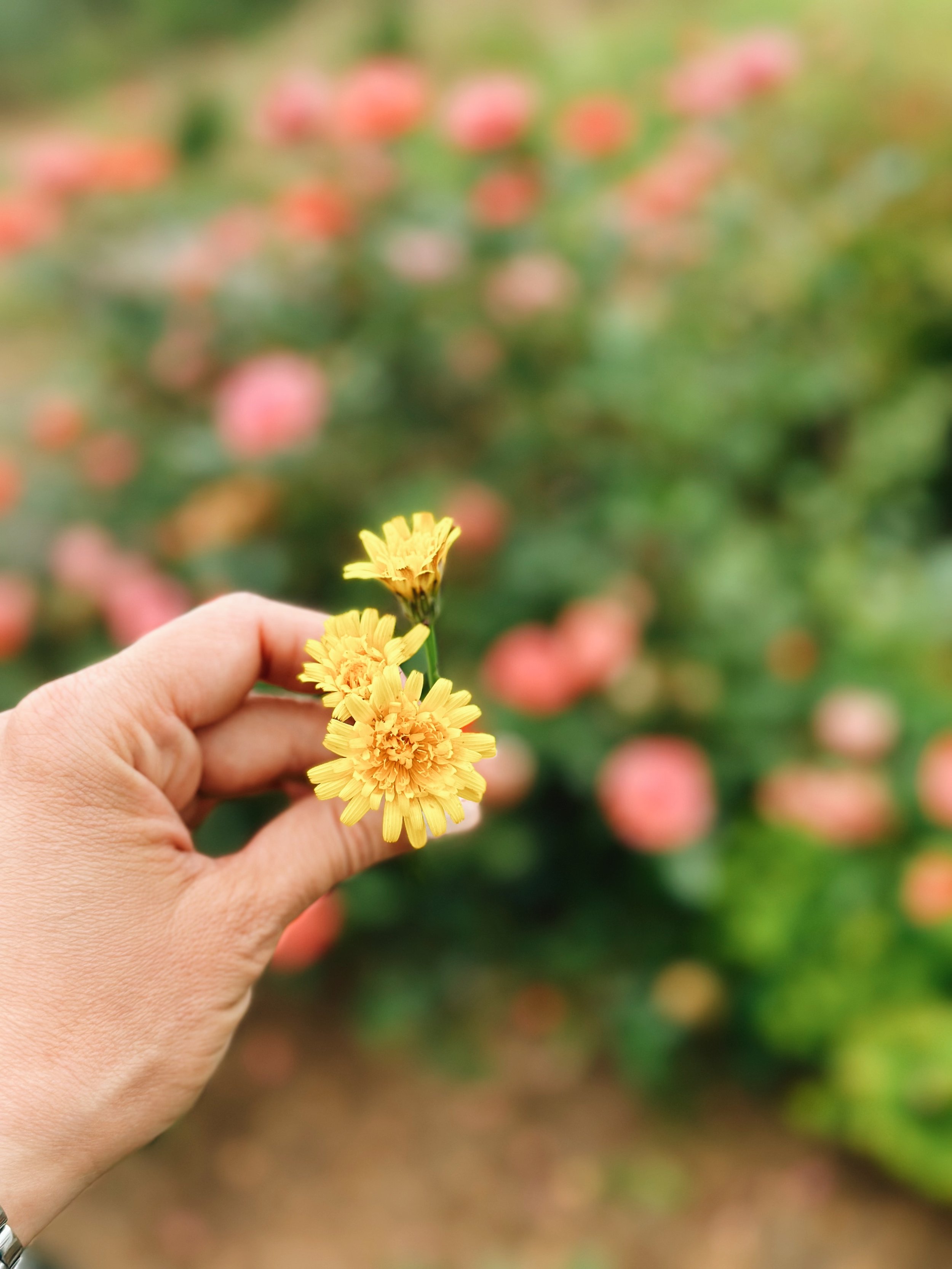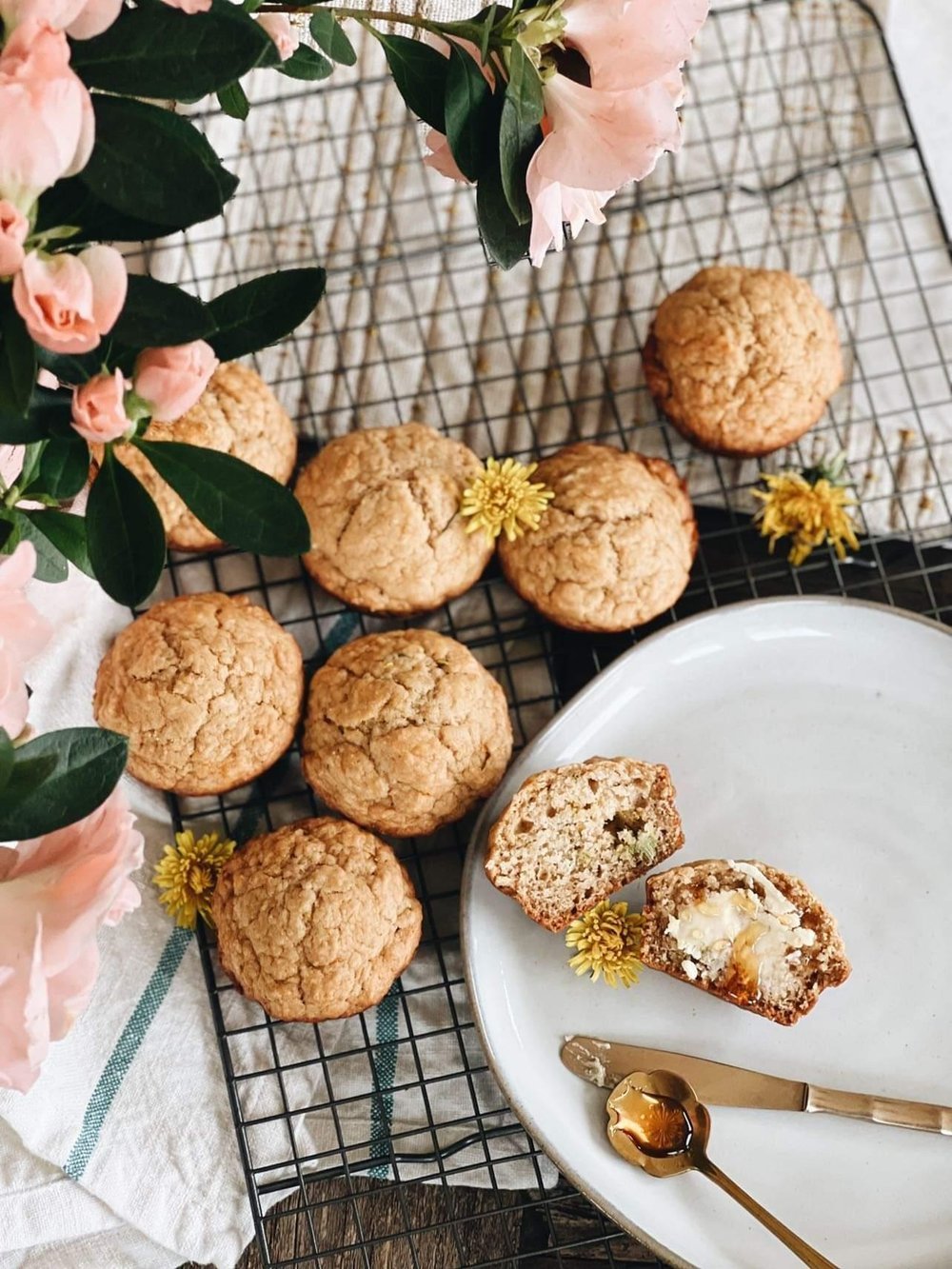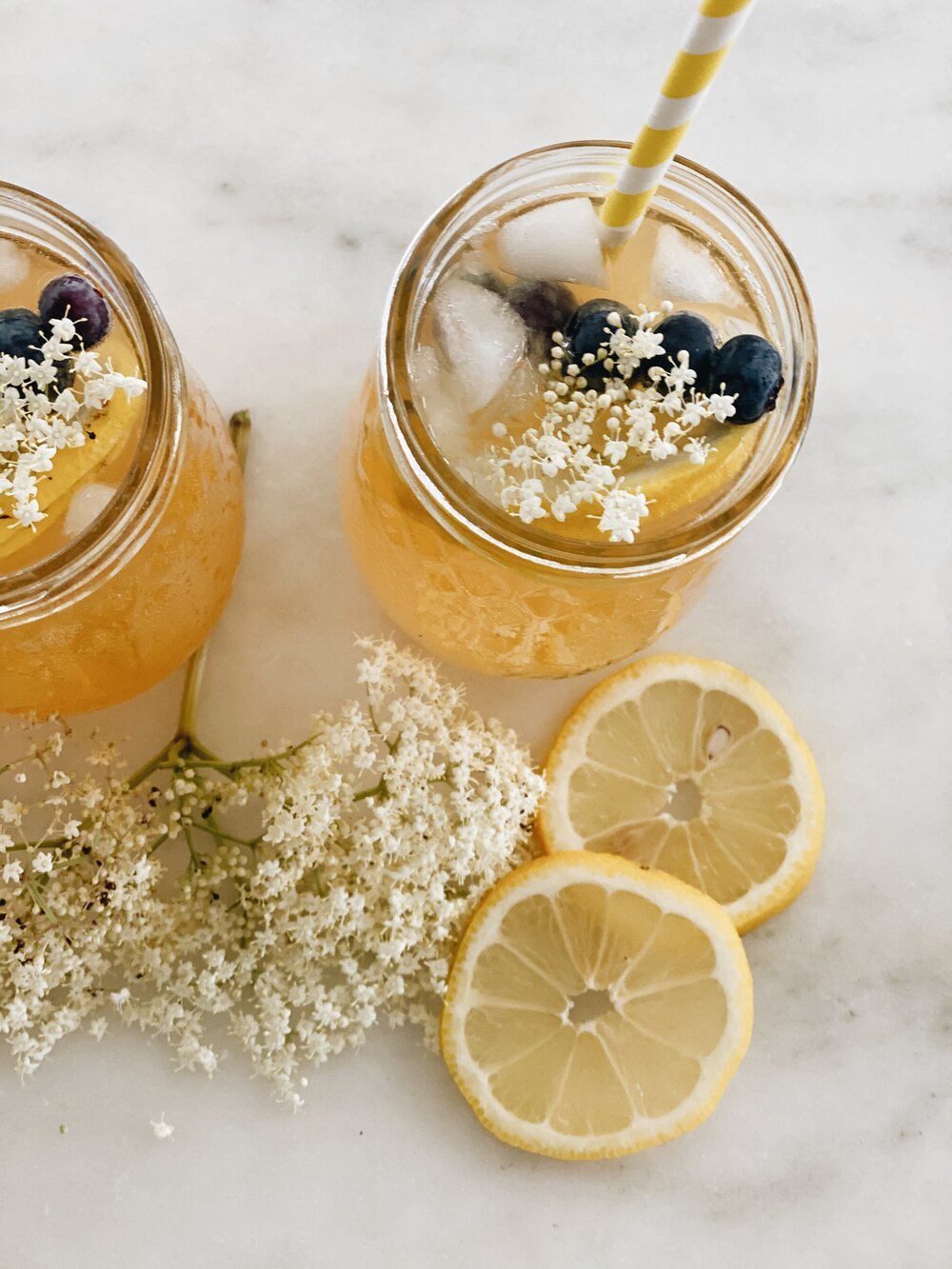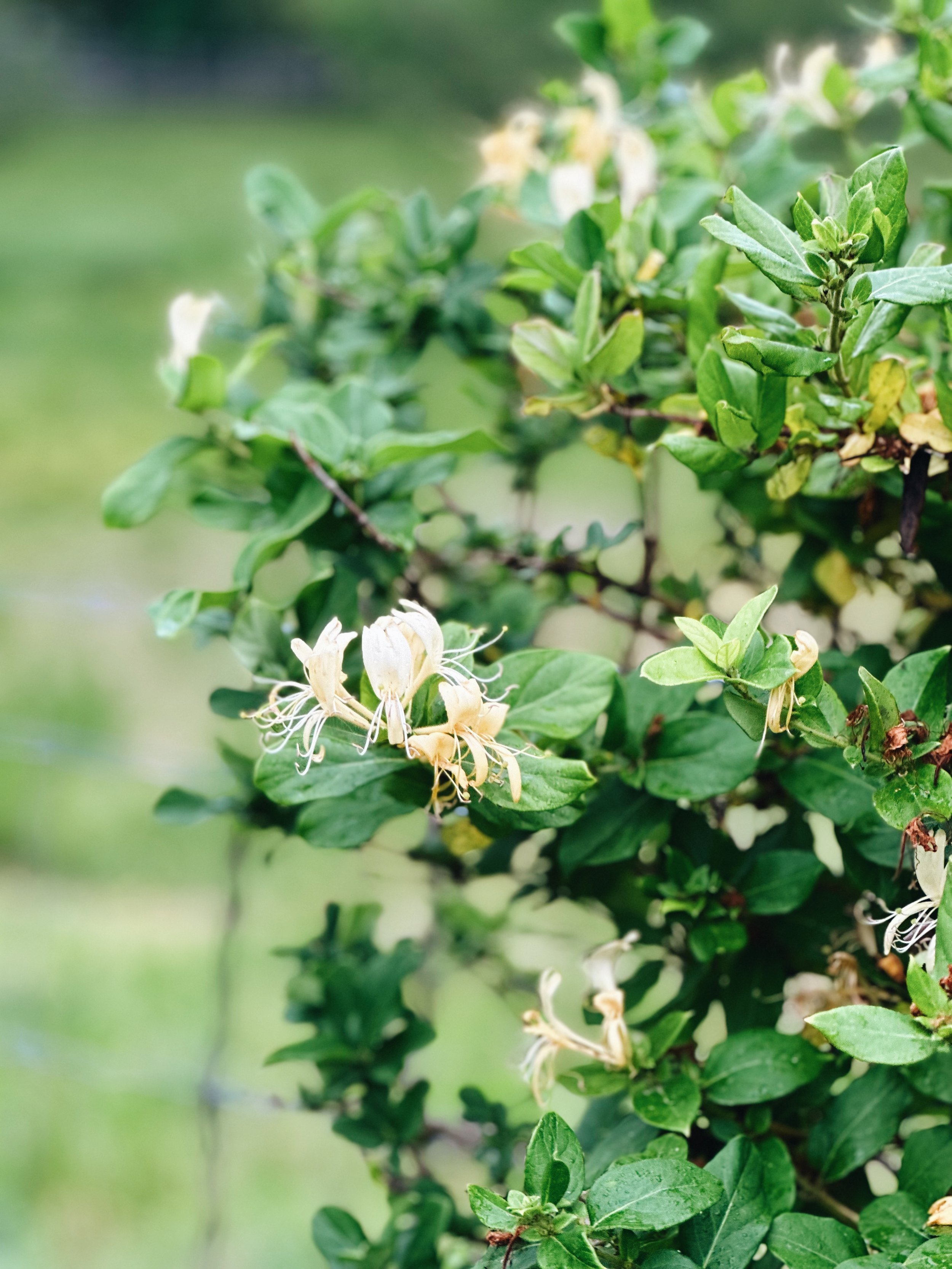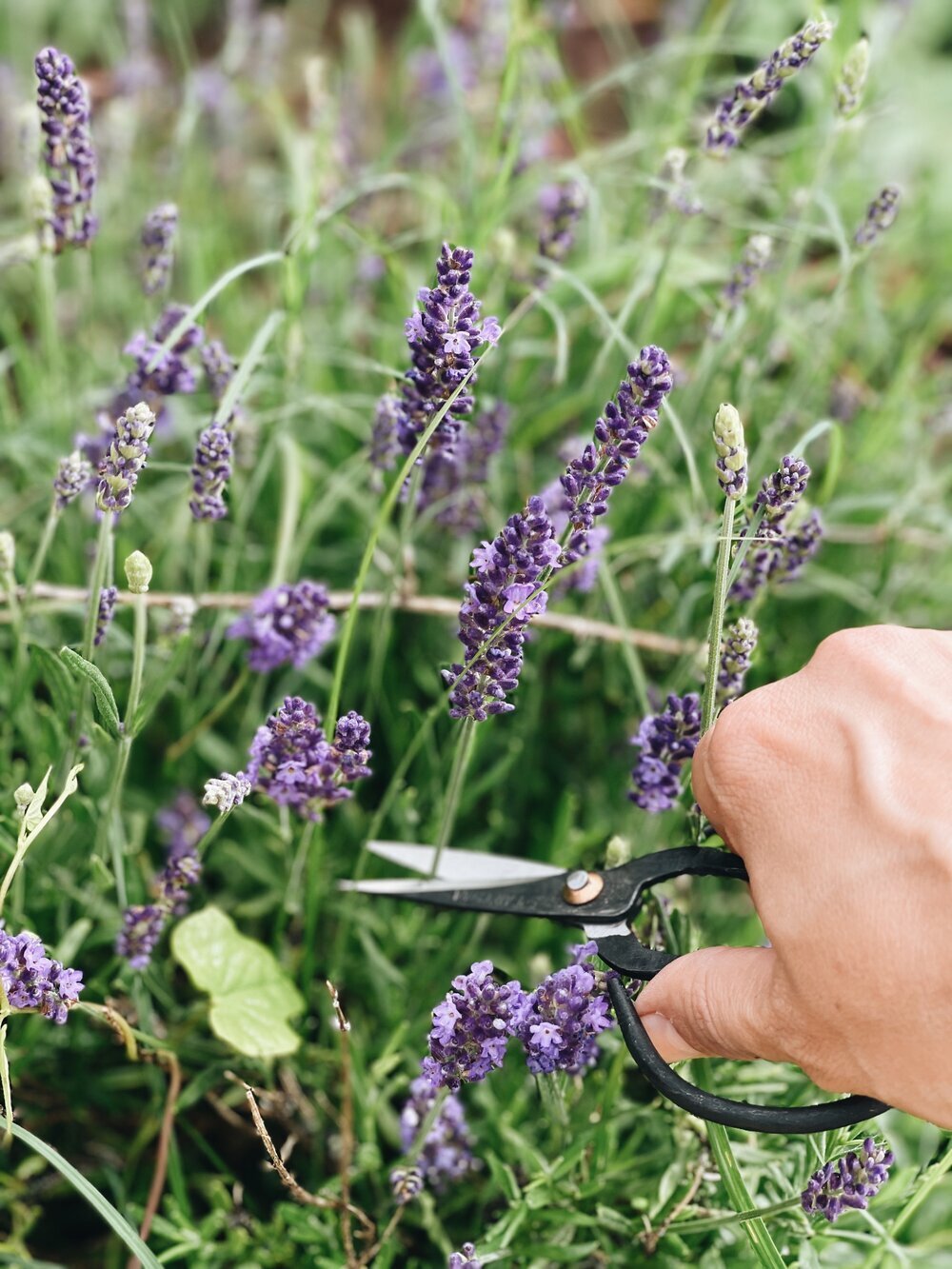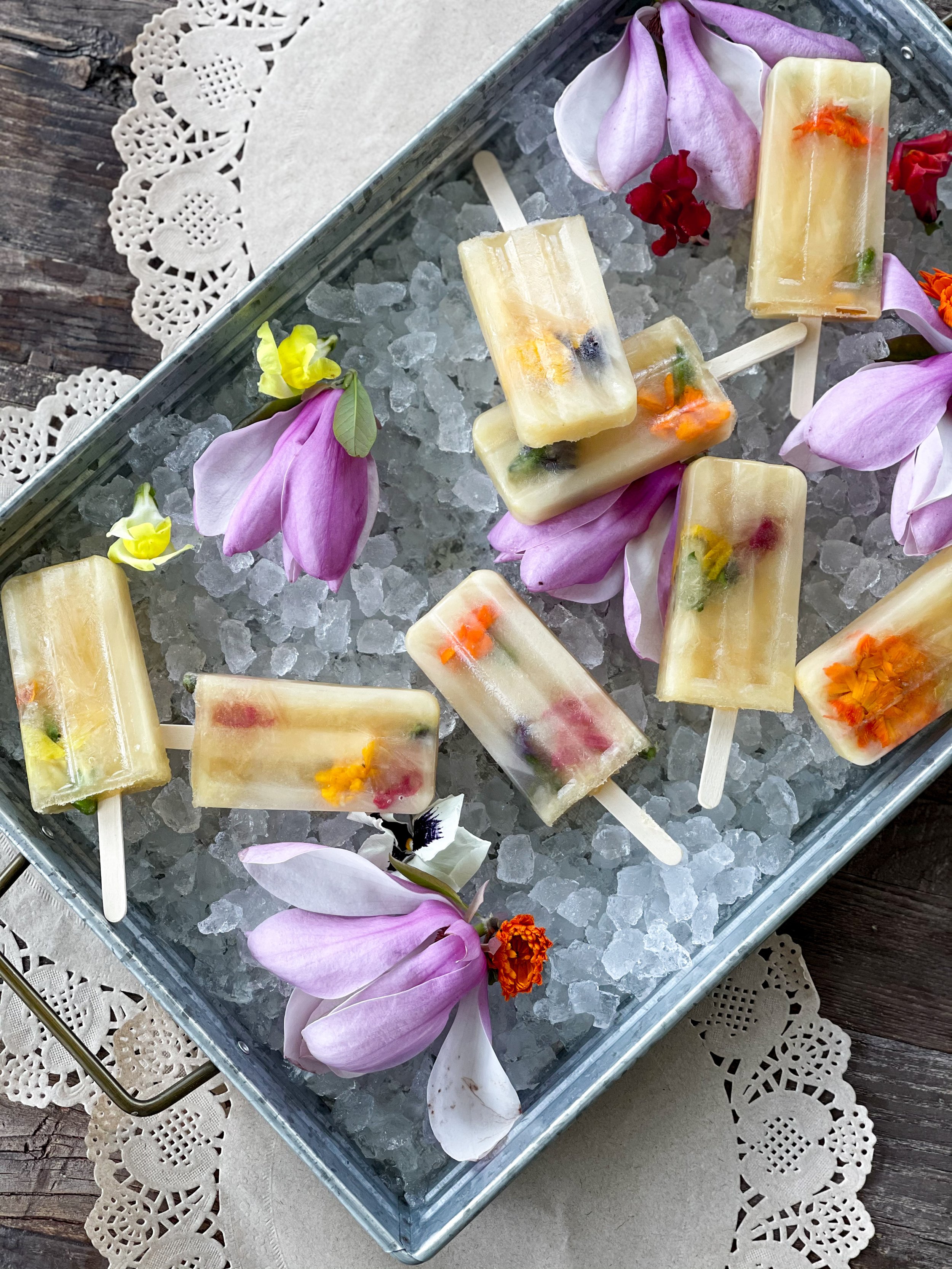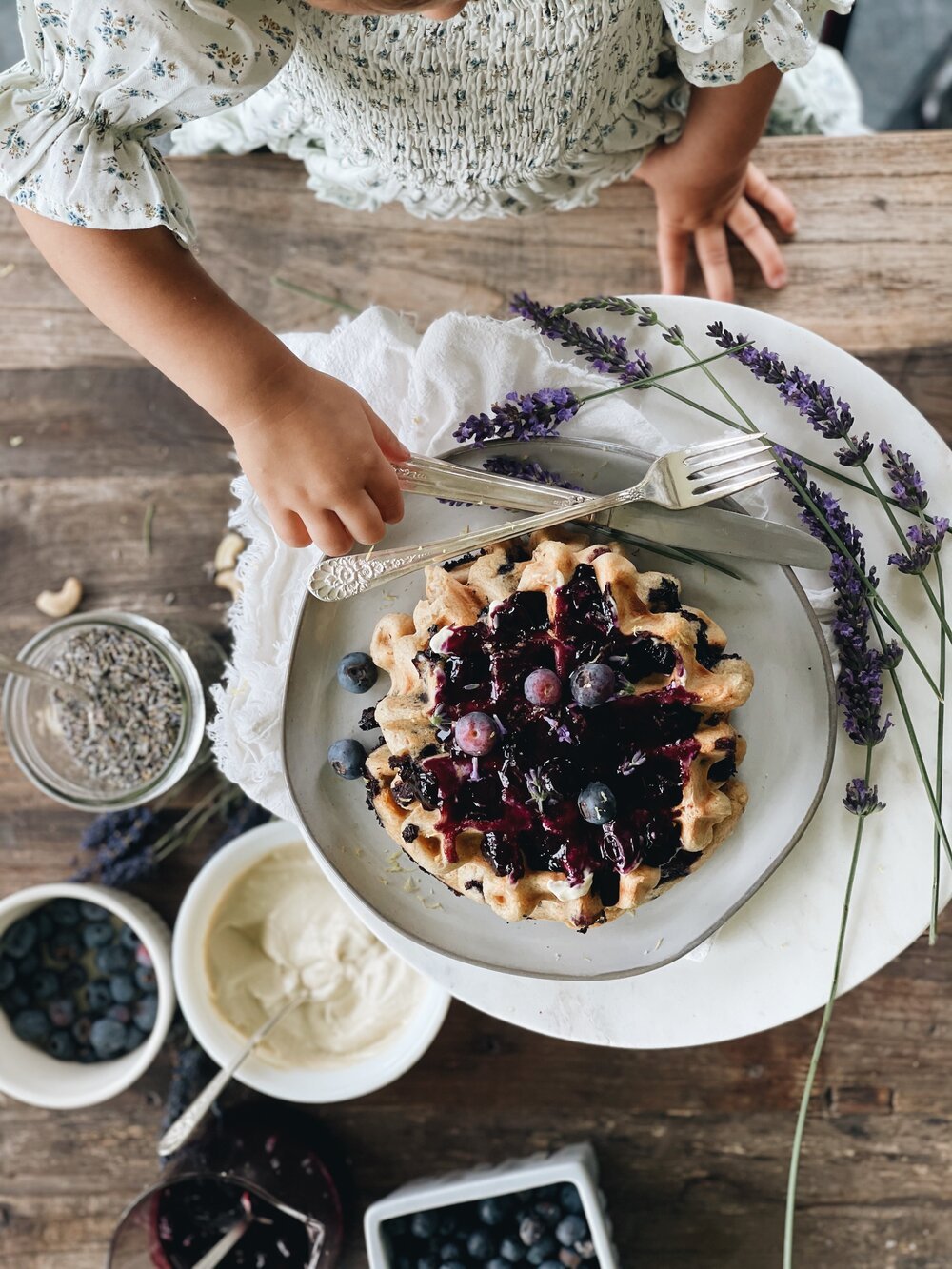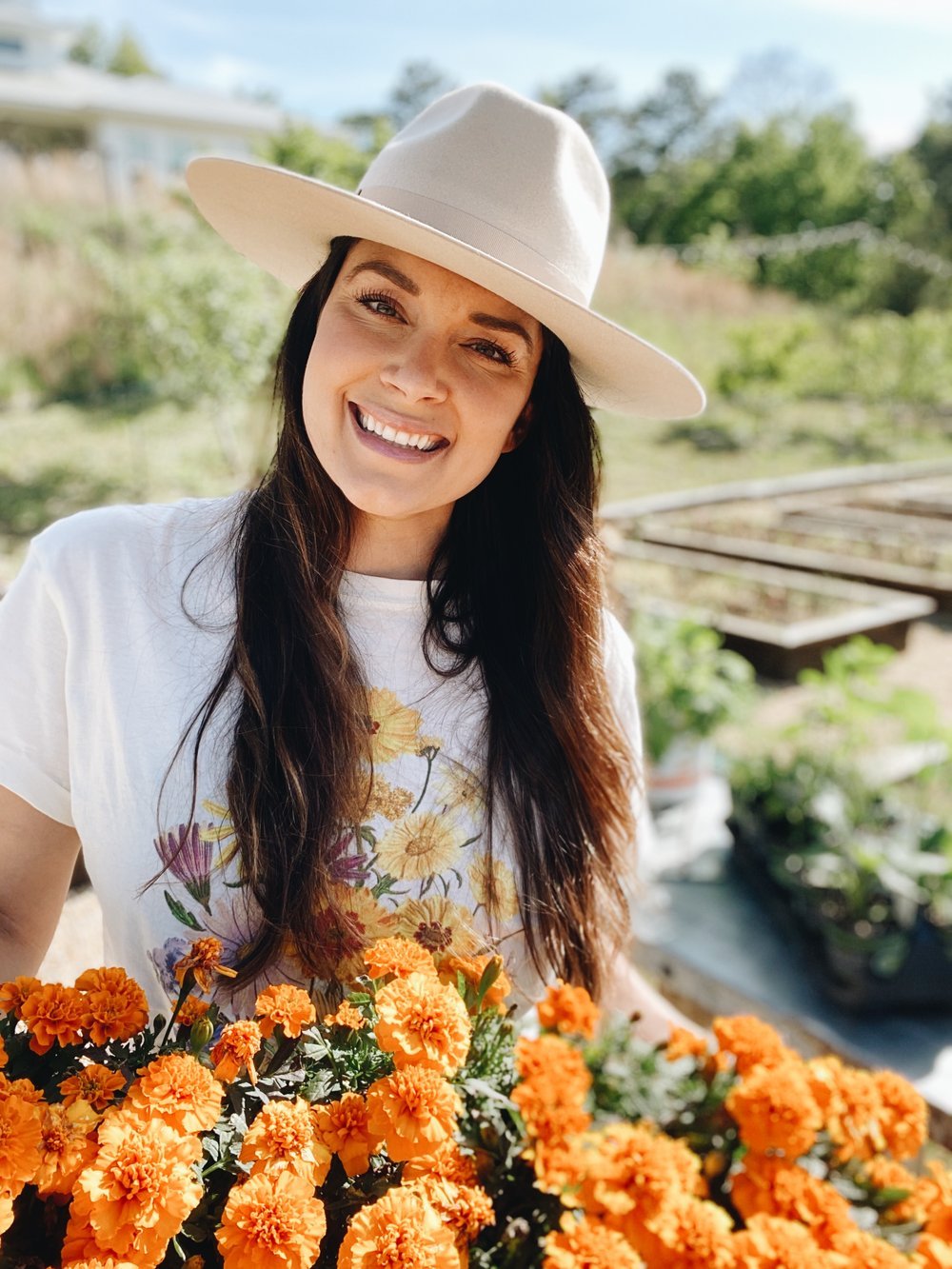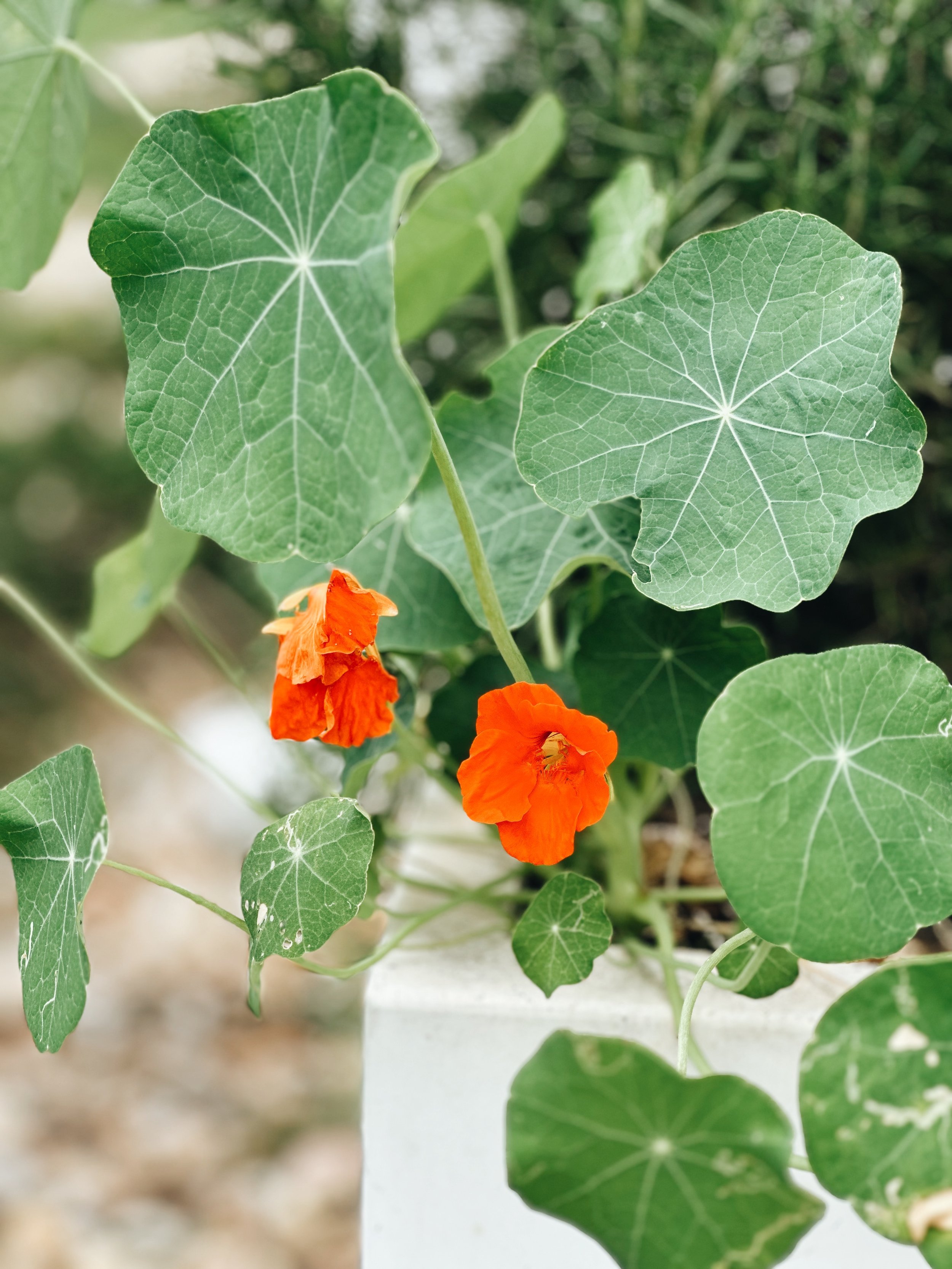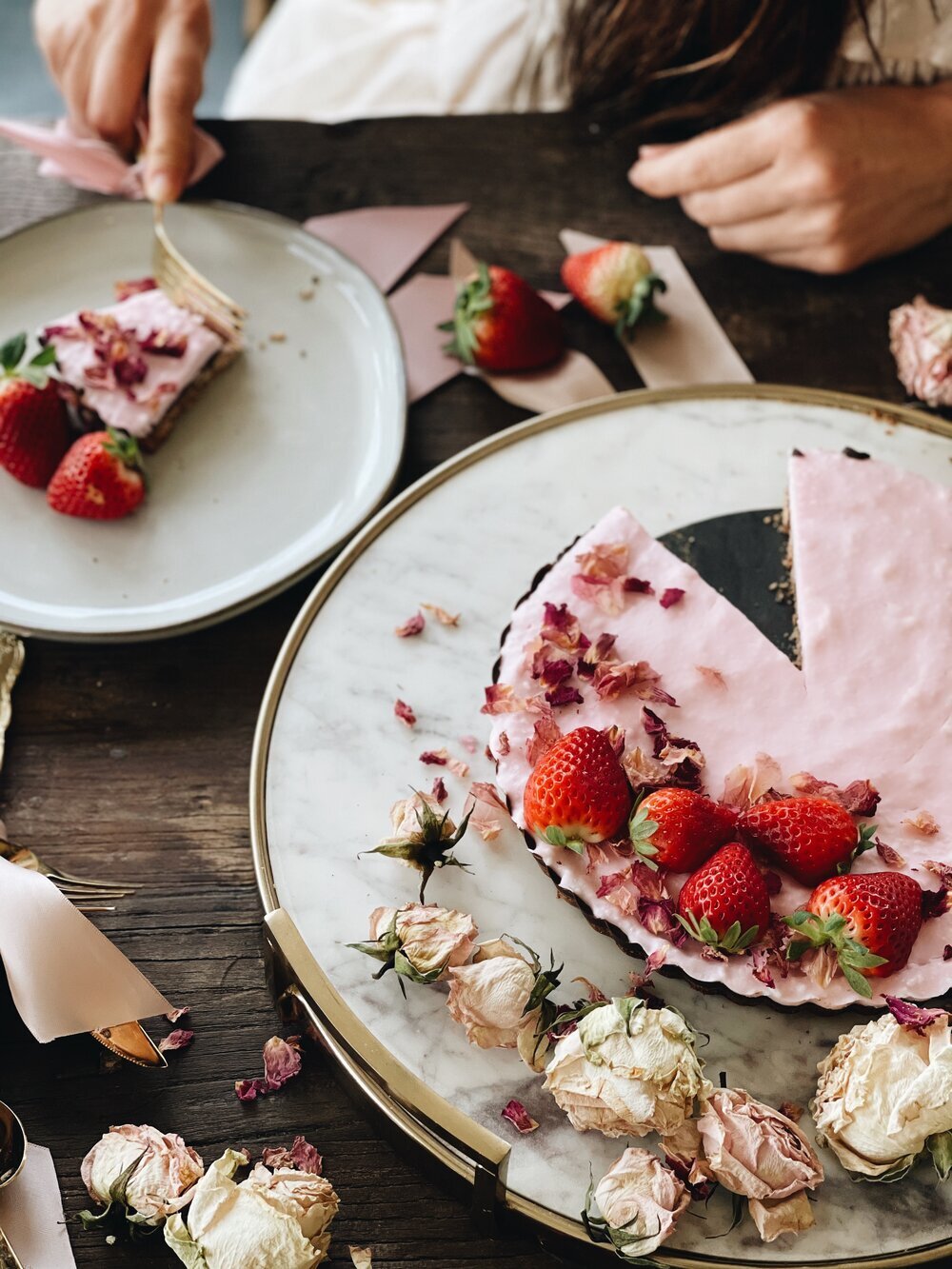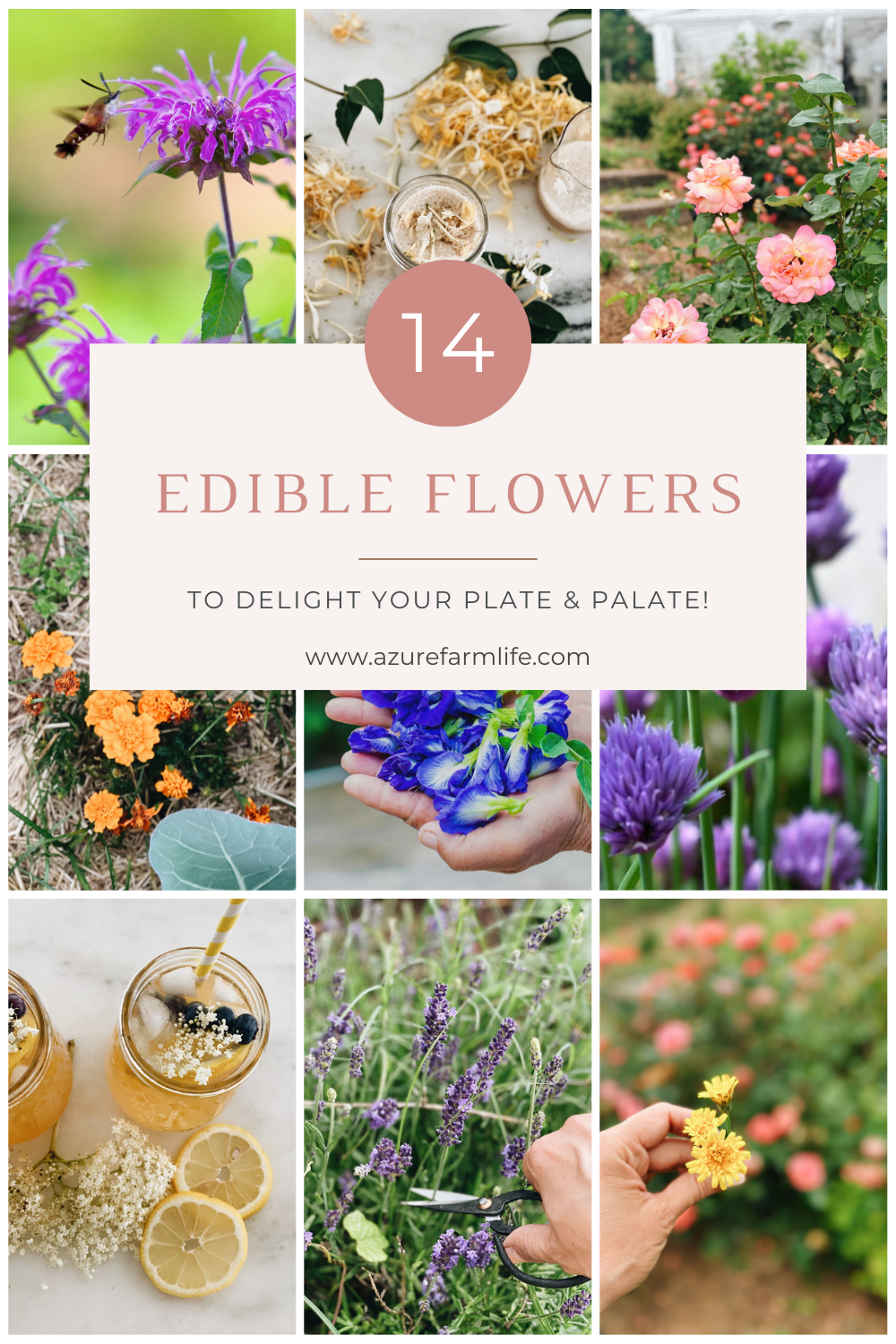14 Edible Flowers To Delight Your Palate And Plate (Pictures Included!)
I just can't imagine life without flowers! How dull would our lives, gardens, homes, and, yes, even our food be without these gorgeous gifts from nature?!
When we think of gardens and the delightful blooms they offer, we often forget that many flowers are not only stunning but also entirely edible. Incorporating edible flowers into our cooking can introduce a whole new level of creativity and flavor to our dishes. How fun!
Whether used as a garnish, infused into beverages, or incorporated into dishes, edible flowers look pretty and also offer various flavors and potential health benefits.
Scroll down to get a list of edible flowers with pictures describing their taste profiles, how to use them, and their potential health benefits.
list of edible flowers with pictures
Bee Balm
Bee balm, also known as Monarda or wild bergamot, has vibrant clusters of red, pink, or purple flowers. You can eat both the leaves and blooms, fresh or dried.
With a flavor profile combining citrus and mint (like oregano), bee balm flowers can infuse syrups, add zest to salads, or garnish desserts.
This flower contains thymol, a compound with antimicrobial properties, and is also high in antioxidants. Bee balm can help with digestive issues, nausea, and sore throats when used in teas. It is also a natural antiseptic and can help with skin concerns like bee stings, rashes, and minor wounds when applied topically.
Bee balm will flower from July to late summer and is hardy in zones 3-9.
Bee Balm - Image from Better Homes & Gardens
Blue Butterfly Pea Flowers
Blue Butterfly Pea Flower is a stunning tropical flower with vibrant blue petals. This edible flower has a subtle earthy flavor with hints of green tea.
This flower contains antioxidants known as anthocyanins, which are believed to have anti-inflammatory and anti-aging properties. Blue Butterfly Pea Flower is also rich in flavonoids and has been traditionally used to support brain health and enhance cognitive function.
Use blue butterfly pea flowers to brew vivid blue herbal teas or infuse them into beverages and cocktails.
There is only one small problem: it's tough (and almost impossible) to get fresh flowers outside Southeast Asia! So you'll most probably have to settle for dried flowers or powder!
Try this recipe:
Calendula
With their sunny yellow and orange petals, calendula flowers exude warmth. They have a subtly spicy, slightly bitter taste, making them popular for teas and broths.
Calendula petals can also enhance the color and flavor of rice dishes or be mixed into salads.
These flowers contain flavanoids that offer anti-inflammatory, antidiabetic, anticancer, and antioxidant properties.
Calendula is a hardy annual plant that is easy to grow in average, moderately fertile, well-drained soils that get full sunlight. They flower from summer through to early autumn.
Calendula - Image from Seeds Ireland
Chive Blossoms
These are some of the prettiest edible flowers, I love them! Chive blossoms come from the chive onion plant and bloom in late spring to early summer.
Their delicate, light to bright purple petals offer an onion aroma and sweet, garlicky flavor but are milder than chives themselves. You can eat chive blossoms raw, pickle them, deep-fry them, or use them as a lovely garnish for salads, dips, or savory dishes.
Chive blossoms are rich in vitamins A, C, and K and contain minerals like potassium and calcium. They also possess antibacterial properties and may help promote a healthy immune system.
Try these recipes:
Chrysanthemum
Chrysanthemums, with their vibrant colors ranging from white and yellow to pink and orange, have a mildly bitter taste with herbal undertones.
Chrysanthemums, typically steeped as a tea, have been used to treat chest pain, high blood pressure, diabetes, headaches, dizziness, and more in traditional medicine. The flower can increase blood flow to the heart and increase a person's sensitivity to insulin.
Make yourself a soothing tea, or add chrysanthemums to stir-fries or salads for a unique touch.
Chrysanthemums prefer a warm, sunny, sheltered spot, with fertile, well-drained soil and will bloom from September to October.
Chrysanthemums - Image from Garden Design
Dandelions
Another one of my favorites!
While you may think those yellow flowers on your lawn are pesky weeds, they are actually so nutritious and versatile! In fact, they will put spinach and kale to shame.
Young dandelion flowers have a sweet, honey-like flavor and, when mature, a slightly bitter, earthy taste. The petals can be used in salads, infused into syrups, or brewed into herbal teas.
Dandelion flowers are rich in vitamins A, C, and K and potassium. They are also full of antioxidants, have liver-detoxifying properties, help lower blood pressure, aid digestion, and support healthy skin.
Gather dandelions from your lawn or fields; just remember not to harvest those that have been treated with chemicals and avoid those found in public parks or roads.
Try these recipes
Elderberry Flowers
When June comes around, our garden gets spoiled with beautiful white elderberry flowers!
The flowers are so tiny and delicate and have a lovely honey-like aroma. When picked right after they open with the pollen intact, they give a beautiful aromatic flavor.
Elderberry flowers have a sweet and floral flavor, making them great to infuse syrups, cordials, or even brewed into teas.
Elderberry flowers are rich in antioxidants and have been used traditionally to support the immune system and ease respiratory conditions. They are also known for their anti-inflammatory properties.
Just remember, when you gather the flowers be sure to leave some behind so you can use the berries later too!
Try these recipes:
Honeysuckle
Oh, the memories of sucking sweet nectar from these delicious petals!
With its pretty flowers ranging from yellow to pink, honeysuckle is often enjoyed for its subtle sweetness and aroma.
Honeysuckle has been used for centuries to treat inflammation, stomach upset, upper respiratory infections, fever, and more. It also offers antimicrobial properties to defend against harmful bacteria associated with staph, strep, e. coli, cholera, salmonella, pneumonia, meningitis, tuberculosis, and dysentery.
Use honeysuckle to make a delicious sweet syrup, a refreshing tea, honeysuckle sugar, or as a garnish for dessert.
Try this recipe:
Lavender
Lavender is renowned for its calming fragrance, but its flowers are also edible and possess a distinct floral, slightly bitter flavor with a hint of sweetness, mint, and rosemary.
Lavender is believed to have relaxing properties, aiding sleep and reducing anxiety. Consuming lavender as a tea can also help with digestive issues such as nausea, vomiting, intestinal gas, upset stomach, and abdominal swelling.
Not only does lavender add beautiful color to your cooking and garden, but they also smell so divine and are great for attracting pollinators and deterring pests in the garden.
Infuse the vibrant purple petals into honey, add to baked goods, or even use them to garnish beverages.
Try these recipes:
Marigolds
Marigolds are such a great addition to any garden! They look beautiful, help deter pests, attract pollinators, and are edible!
Marigolds are in the same family as Calendulas and often get mixed up. Although they are similar in color and properties, they still differ!
Marigolds boast vibrant golden and orange hues and offer a spicy, tangy flavor reminiscent of citrus and saffron. These flowers are commonly used in rice dishes, soups, or stews to add color and depth. Or simply add them to salads for a beautiful burst of color!
Marigolds are rich in antioxidants and flavonoids and have been used in traditional medicine to soothe skin ailments and promote healthy digestion. Gargling with Marigold tea can help with sore throats, gingivitis, tonsillitis, and mouth ulcers and will help soothe the throat's mucus membranes while easing the pain.
Most marigold varieties bloom from early summer until a hard frost in late fall.
Read more: 23 Herbs and flowers for organic pest control in the garden
Marigolds
Nasturtiums
Nasturtiums are vibrant flowers with hues ranging from yellow to orange and red. They possess a citrusy, peppery flavor similar to watercress, adding a tangy kick to dishes.
The leaves and petals of the nasturtium plant are packed with nutrition. It is rich in vitamin C, can improve the immune system, and has antibacterial properties that can aid the digestive and respiratory systems.
Use nasturtiums to brighten up salads, sandwiches, pizza, or even cakes! Or make a healthy tea to reap all the benefits.
Nasturtiums will bloom from winter through spring in mild winter areas and from late summer to fall in colder climates.
Pansies
Pansies, with their delightful array of colors, possess a subtle floral flavor with a mint undertone and hints of wintergreen.
They make a beautiful addition to salads, appetizers, desserts, or even as a decorative touch on drinks. You could also drink pansy tea to alleviate joint pain, diminish headaches, or bring down a fever.
Pansies are a rich source of antioxidants, including flavonoids, and offer anti-inflammatory and antimicrobial properties. Pansies are also high in Vitamin C and potassium.
Pansies are short-lived perennials, are particularly hardy, and will flower from May to September.
Try this recipe:
Red Clover
Despite its name, red clover flowers have vibrant pinkish-purple petals with a mild, sweet flavor and subtle vanilla hints.
Red clover flowers are rich in phytoestrogens and have been used to alleviate menopausal symptoms. They are also believed to have blood-purifying and anti-inflammatory properties and can help stubborn coughs, sinusitis, or bronchitis.
Use red clover fresh in salads, steeped into teas, or dried and ground into a powder for various culinary uses.
Red clover will flower from late spring to early autumn, and the bees and butterflies will be overjoyed by the flowers with the promise of their rich sweet nectar!
Red Clover - Image from Wikipedia
Roses
This age-old favorite never disappoints! Roses are the epitome of beauty and elegance and offer a delicate floral taste with subtle hints of fruitiness.
Roses are packed with antioxidants and vitamin C and have soothing properties, promoting skin health and reducing stress. Rose petals contain polyphenols, antioxidants that protect your body from cell damage and have been shown to reduce the risk of heart disease, diabetes, obesity, and cognitive diseases.
Rose petals can be infused into liquids, syrups, baked goods, or even blended into creams and butter. You could also grind them into a sweet or savory spice mix or use them to make flavored sugar.
Roses with the sweetest fragrance are likely to have the most flavor.
Try this recipe:
please note!
This is very important, friend!
When using edible flowers, it is essential to ensure they have been grown organically and are free from pesticides or other harmful chemicals.
It's also crucial to ensure that you have positively identified the flowers and that they are safe for consumption. Some flowers may have toxic or harmful look-alikes, so it's essential to exercise caution and source them from reliable sources.
Additionally, some individuals may have allergies or sensitivities to certain flowers, so it's advisable to exercise caution and moderation when trying new varieties.
Edible flowers can really add a delightful twist to your food and drinks! I love how we can not only enjoy the beauty these flowers offer, but we also get to eat them. How wonderful!
By incorporating these beautiful blooms into our dishes, we make them prettier and add a burst of flavor and a touch of elegance.
I hope this list of edible flowers has given you some new inspiration to use and enjoy what Mother Nature blesses us with!
Love, Annette xx
Read more: My top 12 easiest flowers to grow

